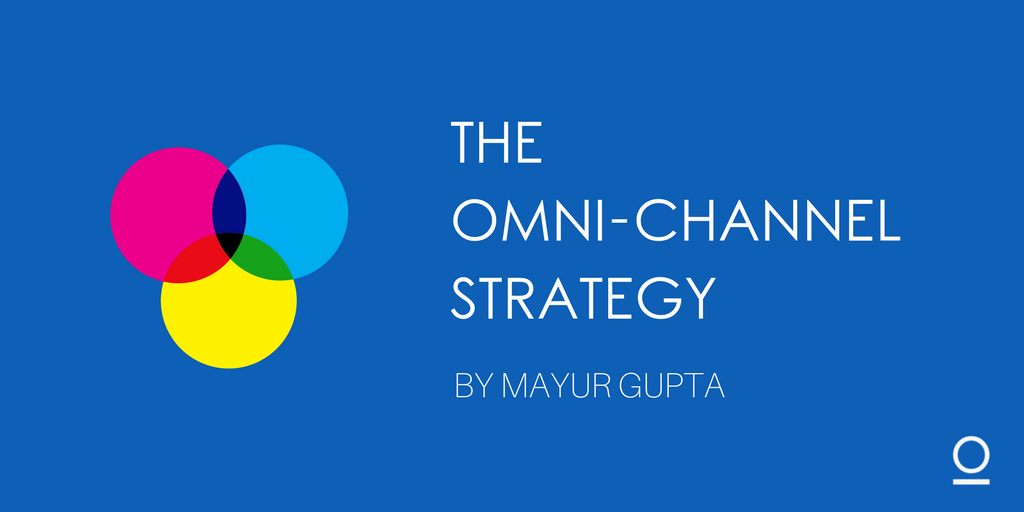Enough has been said about the Omni-Channel experience through two perspectives – primarily, why it is a myth, as seen through my posts including The Omni-Channel Paradox, Omni-Channel Far From Being a Reality. Secondly, discovering what the Omni-Channel experience will really mean for brands and consumers, while understanding why it is critical that every brand solve this puzzle and inspire behavioral change.
However, few brands and marketers have gained much success in deploying Omni-Channel strategies for one simple reason – we operate atop an extremely fragmented ecosystem, which is channel-focused as opposed to being channel-agnostic. In order to make this shift, a fundamental change is in order; I call these elements the First Principles of An Omni-Channel Strategy (listed in no specific order):
1. Drive Convergence
The need to disrupt the silos and connect the fragments across the organization, fundamentally within the marketing ecosystem.
– Technology must have the ability to converge across organizational models & functions. Therefore, marketing and eCommerce or marketing and sales must not be isolated from each other (for example).
– The ability to have marketing technology converge and construct an interconnected ecosystem should be a vital asset that we strive for. We possess the toolkit to harvest our data, and yet lack the ability to leverage said information.
– It is critical that data silos converge – driving data harmonization will enable us to construct and deliver a seamless customer experience, for the purpose of changing consumer behaviour.
– In order to oversee these operations, we must converge the skills of the modern marketer as well. Individuals who are capable of shattering the common T-Shaped mindset and transitioning towards what I like to call the Pi Shaped mindset, resemble the rare and well-sought marketing unicorns.

2. Content Strategy
Take an integrated approach to developing content strategy that aids you in delivering the appropriate content to the right consumer with the right context. Ideally, this will be done at a time and touchpoint of her choice.
Content, alongside data and technology, are the sole channel-agnostic linchpins that can drive the Omni-Channel experience. Content will follow and deliver the final punch by providing an immersive yet seamless consumer experience. This will in turn inspire behavioral change through participation.
3. Connected Planning Using CONTENT, DATA & TECHNOLOGY
Initiate a planning process that will inspire data-driven marketing (connecting data, content and technology) with the consumer as a central focus. We must move away from traditional planning constructs that are “Channel Driven,” towards plans or strategies derived from data and consumer insights. This will lead us to determine the “right” content throughout the consumer journey, specifically focusing on the inflection points where a change is required in consumer behavior.

4. Shifting Our TECHNOLOGY & CHANNEL Obsession to CONSUMER OBSESSION
We need to make a transition from technology or channel obsession to consumer obsession. It ultimately boils down to the way in which we measure success; whether it surrounds great technology solutions, driving scale and cost savings, OR it’s primarily about driving consumer experiences and inspiring participation through behavioral changes, eventually spurring top line growth.
Until we are able to establish “consumer-focused” goals as a collective vision and measure of success for all, we will continue to observe examples of channel and technology obsession. After all, we are currently recognizing and rewarding that same behavior.
5. Data Strategy
Finally and perhaps most importantly, we must establish a data strategy which is focused on Data Harmonization and Data Convergence. It must be recognized that data is the linchpin that ties together the consumer journey. It serves as the only signal that we receive as the consumer travels from one touchpoint to another. The ability to learn from one’s former experiences to compose future experiences, agnostic of channel, will ultimately lead to a seamless, consumer-centered, Omni-Channel experience.
Ironically, our industry has been talking a lot about Omni-Channel for quite some time, yet the only portion of the ecosystem that truly operates and behaves in an Omni-Channel way is the consumer. We can see that everyone else is a representation of multi-channel, at most.

Although these 5 fundamentals may not cover everything that you will need to become Omni-Channel, these elements are certainly essential for you to consider before embarking on that journey. Otherwise, Omni-Channel will continue to exist as nothing more than an abstract theory.
If you would like to contribute to our blog, we are currently seeking guest authors to share their unique insight and thought leadership. Please reach out to info@qoints.com for more information – we look forward to hearing from you!
About the Author
Mayur Gupta, otherwise known as a model Chief Marketing technologist, is the Global VP for Growth & Marketing at Spotify, responsible for setting strategy and driving the growth of Spotify’s global user base. Prior to this position, he was Global Head of Marketing Technology and Innovation for Kimberly Clark, as well as Senior Vice President of Marketing, OmniChannel Solutions and Digital Capabilities at HealthGrades. Mayur was recognized as one of the “40 under 40” leading marketers in the industry by BrandInnovators in 2014, and also received the CMO Programmatic Award by the CMOClub.
Follow Mayur Gupta @inspiremartech or on his blog www.inspiremartech.com



